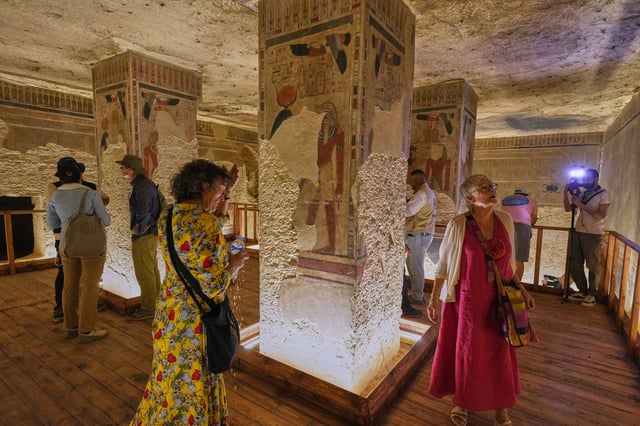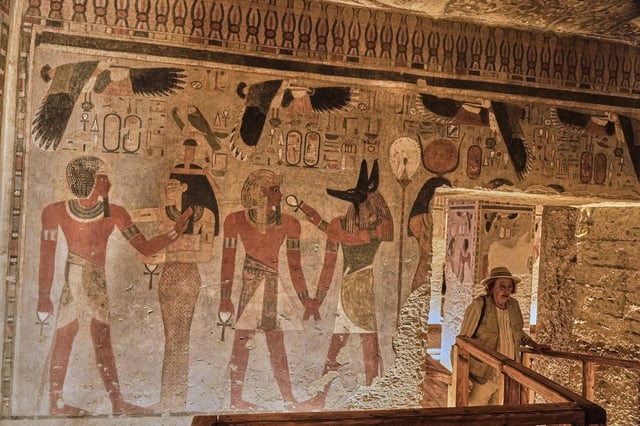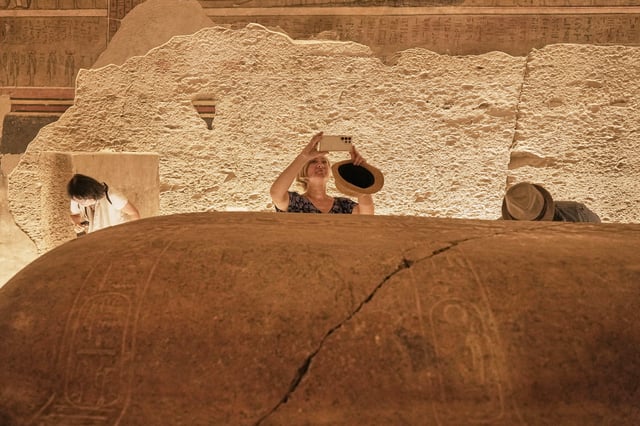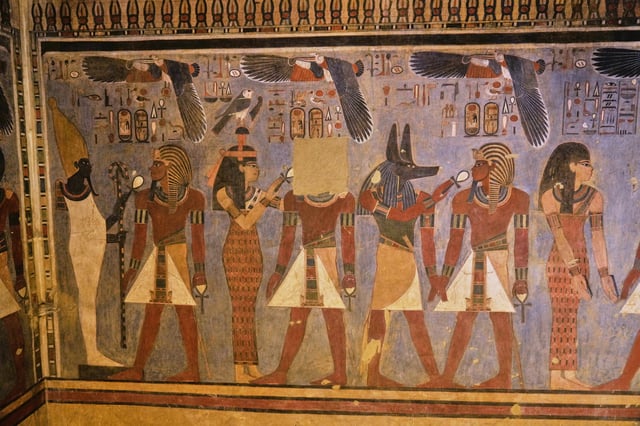Overview
- Egypt’s tourism and antiquities minister, Sherif Fathy, opened the site to reporters in Luxor on Saturday after more than 20 years of work.
- Supreme Council of Antiquities chief Mohamed Ismail Khaled said the rescue involved over two decades of delicate stabilization led by Japanese partners with UNESCO support and more than 260 specialists.
- Visitors now view floor-to-ceiling paintings with vivid blues and the massive granite sarcophagus lid etched with hieroglyphics inside the sprawling complex.
- The tomb descends through a 36‑meter, downward-sloping corridor to the king’s burial chamber, with adjoining rooms for Queens Tiye and Sitamun.
- Officials are positioning the reopening as part of a tourism push, noting that many original objects were removed long ago to institutions including the Louvre, the Metropolitan Museum and Highclere Castle.



